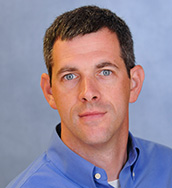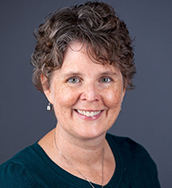Authors argue public planning should be caring; science shows it is impossible to separate emotion from process

LAWRENCE — In the popular television show “Parks and Recreation,” public servant Leslie Knope once said when people yell at her she hears them “caring loudly.” Bearing the emotions of angry communities might be a comedic TV trope, but public planners are trained to remain rational and keep their own emotions out of the process. Two University of Kansas researchers have published an article arguing that not only is it a disservice for public servants to try to maintain the paradox of separating their own emotions while considering the community’s, but scientific research also shows it is impossible.
Because emotions contain wisdom in their own right and cannot be separated from daily work, public service educators should train students to embrace their own emotions and view caring as a central part of their work, the authors said.
 “Historically, we’ve been pretty intellectual and data-driven. For most of the 20th century – and still today in a lot of places – an older white guy goes into a room, looks over a bunch of numbers and comes out with a plan mismatched to community needs,” said Ward Lyles, associate professor public affairs & administration. “We cannot send planners into communities without acknowledging emotion plays a valuable part in decision making, that expressions of emotions are obstacles to overcome. Even though our field grapples with this all the time, we put almost no training into actively and fully ‘caring about our community.’”
“Historically, we’ve been pretty intellectual and data-driven. For most of the 20th century – and still today in a lot of places – an older white guy goes into a room, looks over a bunch of numbers and comes out with a plan mismatched to community needs,” said Ward Lyles, associate professor public affairs & administration. “We cannot send planners into communities without acknowledging emotion plays a valuable part in decision making, that expressions of emotions are obstacles to overcome. Even though our field grapples with this all the time, we put almost no training into actively and fully ‘caring about our community.’”
Lyles and Stacey Swearingen White, professor and director of KU’s School of Public Affairs & Administration, published the article in the Journal of the American Planning Association. The KU researchers examine a seminal 1969 publication in the profession that viewed citizen involvement in planning as a ladder. Author Sherry Arnstein described citizens' emotional responses as a reaction to their lack of power in the public planning process. At the lowest rungs of the ladder were people granted the least power: minorities, the poor and those in similar situations of little influence. Slightly higher were people experiencing tokenism, or those from lower rungs granted small roles in the process such as invitations to public meetings. As the rungs progress upward, those occupying them possess more power in the planning process: Ideally, at the top, citizens truly have control.
While a half-century has passed since Arnstein’s ladder began to influence planning and related public service fields, the authors argue not enough is being done to meaningfully engage the public to help with emotionally laden issues such as equitable access to quality infrastructure, social justice in community programs and grappling with the climate crisis. While planners genuinely want to do what is best for the communities they serve, attempting to set aside one’s own feelings about those issues — and control or steer the emotions of the public — does not allow for true collaboration and effective public policy, especially those in traditionally marginalized communities.
 “A large part of what planners do is engaging the public in the planning process. We have to be able to understand what it is a community wants for itself and how to help achieve that,” Swearingen White said.
“A large part of what planners do is engaging the public in the planning process. We have to be able to understand what it is a community wants for itself and how to help achieve that,” Swearingen White said.
Lyles and Swearingen White also analyzed research in psychology, sociology and neuroscience to show that humans are not capable of completely separating their own emotions from those they serve. They distilled that research into nine insights:
- When planners experience the feeling of threat, similar to the tense sense of flammability in Arnstein’s writing, their brains often respond with a natural sense of flight, fight or freeze, reducing opportunities for productive discussion and collaboration
- Planners’ use of logical thinking is rarer than they like to believe, meaning that planners rely on irrational thinking at moments when they need to slow down and engage their more evolved cognitive faculties
- Planners can intentionally reinforce experiences that support planners’ abilities to work with other people who are also constantly changing.
- Planning’s longstanding struggle with the emotional paradox is indicative of even longer-standing intellectual traditions that stigmatize emotions
- Planners cannot assume that they, or anyone else, will interpret expressions of emotion by other people consistently or accurately; perceptions are inherently limited and influenced by emotions and cognitive biases
- Planners can embrace, understand and use the wisdom of their emotions
- Planners who understand relationships as inherently emotional can be more intelligent and effective in their work
- Planners can work with emotions to more skillfully and effectively engage with the full spectrum of diversity and difference in communities, particularly as planners aim to advance social equity and justice
- Power is relational. Planners may feel empowered when fostering public engagement, even as that power generates cautionary feelings of uneasiness.
“Western scientists are confirming what many spiritual traditions, especially Buddhist lines of insight, have argued for thousands of years: breathing, mindfulness and other techniques help us work with deeply intertwined and connected systems of thought and feeling,” Lyles said. “Essentially, Stacey and I, along with a growing number of other scholars, feel that we’ve spent too long preparing planners as if their brains are computers with a switch to turn emotion on and off, instead of the much more complex, nuanced, and importantly, powerful systems they really are.”
The authors cite the idea of neuroplasticity, which finds that human brains are continuously rewiring and evolving neural connections, as one premise behind their insights. Brain scans have shown that when people think about certain topics, even unpleasant ones, the emotional control centers of the brain are involved as well.
“I would say that’s emblematic of the planning process. You can’t discount emotion or just say, ‘I quit.’ And if you try to ignore your own or others’ emotions, you’re doing a disservice to what really matters to the community,” Lyles said.
The authors conclude by calling for their field to reimagine work and consider planning as caring. To do so, they provide questions working planners can use for self-reflection, call for educators and leaders to prepare future planners who embrace emotion and social intelligence and promote inclusion through cultural humility, among other actions.
“Public engagement matters because it is emotional, and it is emotional because it matters. We must see the essence of humanity as including rational thought characteristic of primates but also emotions that we inherit from our earlier ancestors,” Lyles and Swearingen White wrote. “We must recognize the wisdom in a critical analysis of the causes of inequities in our communities but also the frustration, anger and grief in our communities. In doing so, we will honor Arnstein’s indignation at injustice and wisdom in charting a course to more equitable processes and outcomes while also better resolving the emotional paradox that her work mirrors back to us.”
Photo credit: Pexels.com